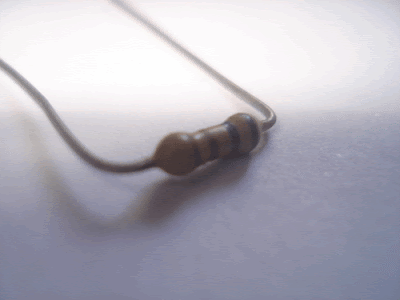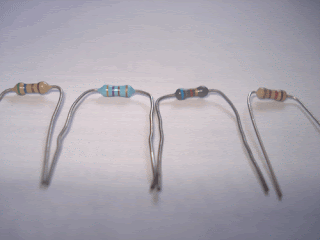Our recent discussion was all about the Characteristics of Resistors and on this post, we will be dealing about it's constructions. We are going to learn the materials inside this small electronic component and understand more how it works. To refresh your memory, we have discussed that the primary function of a Resistor is to provide resistance limiting the flow of electrons which depends on the component's specification.
There are several different types of Resistors coming out from the market and perhaps there are even new types that we are not yet aware about. Anyway, the most common type is the Fixed Value Resistors. If you are a student taking-up a course in the field of electronics, you will be making use of this type of Resistor in your projects. They will teach you how to read its value either through the Multi-Meter device or Color Coding procedure.
So what are the material composition of a Resistor?
Inside the Resistor is a small Ceramic Rod. On the manufacturing process, complicated machines are able to insert thin films of carbons into the rods. The next process is to place the Resistive Coating around the ceramic rod through spiral rotation. The machine performing such delicate procedure is programmed to make sure that both ends of the rods will have the correct value.

You can easily find Carbon Film Resistors on the market. They come with cheap prices and there are several fixed values that are available for you to buy. However, these values ranges from ±10% or ±5% or the "Nominal Value".
Metal Oxide and Metal Film are made in the same process but the main difference is that they have higher accuracy in value which ranges from ±2% or ±1% of their nominal values. Although, the accuracy in terms of the nominal values does not have any effect on simple circuits thus complicated circuits are the once that rely on using these types of resistors.

If you want complete accuracy then the Wirewound Resistor is best recommended for your project. Such type of accurate resistors are made by winding-up thin wires around the ceramic rod. The application for this type of component are used in complicated reading devices such as Oscillator, Multi-Meters, and etc... The best part of using Wirewound Resistor's advantage is that it can pass a large amount of current without resulting into overheating. Thus, circuits that require high currents such as Power Supplies do use this type of Resistor.
There are several different types of Resistors coming out from the market and perhaps there are even new types that we are not yet aware about. Anyway, the most common type is the Fixed Value Resistors. If you are a student taking-up a course in the field of electronics, you will be making use of this type of Resistor in your projects. They will teach you how to read its value either through the Multi-Meter device or Color Coding procedure.
So what are the material composition of a Resistor?
Inside the Resistor is a small Ceramic Rod. On the manufacturing process, complicated machines are able to insert thin films of carbons into the rods. The next process is to place the Resistive Coating around the ceramic rod through spiral rotation. The machine performing such delicate procedure is programmed to make sure that both ends of the rods will have the correct value.

You can easily find Carbon Film Resistors on the market. They come with cheap prices and there are several fixed values that are available for you to buy. However, these values ranges from ±10% or ±5% or the "Nominal Value".
Metal Oxide and Metal Film are made in the same process but the main difference is that they have higher accuracy in value which ranges from ±2% or ±1% of their nominal values. Although, the accuracy in terms of the nominal values does not have any effect on simple circuits thus complicated circuits are the once that rely on using these types of resistors.

If you want complete accuracy then the Wirewound Resistor is best recommended for your project. Such type of accurate resistors are made by winding-up thin wires around the ceramic rod. The application for this type of component are used in complicated reading devices such as Oscillator, Multi-Meters, and etc... The best part of using Wirewound Resistor's advantage is that it can pass a large amount of current without resulting into overheating. Thus, circuits that require high currents such as Power Supplies do use this type of Resistor.

